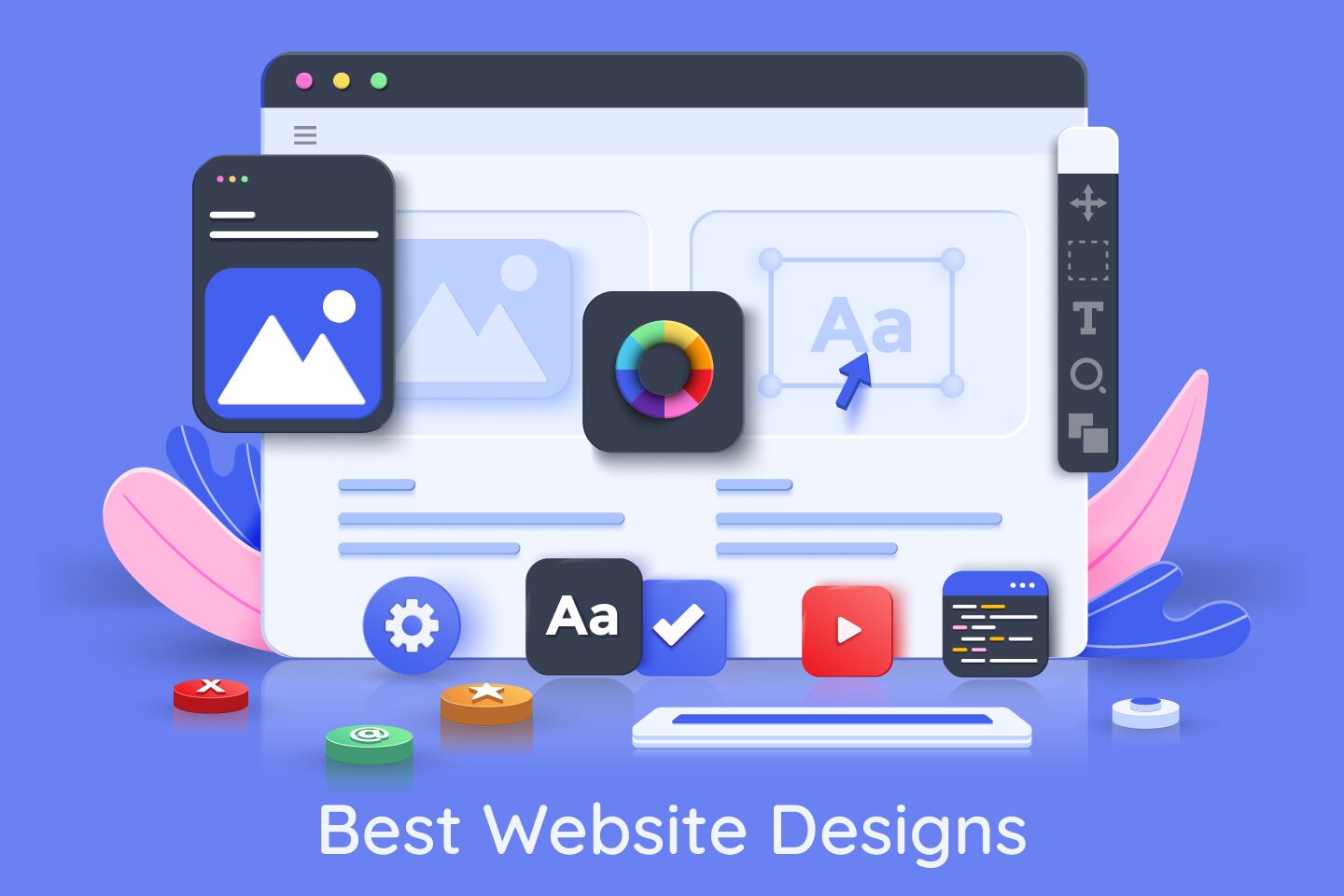Exactly How to Pick the Right Website Layout for Your Service
Picking an ideal web site design for your business is a multifaceted process that needs careful factor to consider of numerous aspects. Focusing on individual experience and responsive design can improve ease of access and satisfaction.
Define Your Company Goals

For instance, if your primary aim is to boost shopping sales, concentrate on creating a smooth purchasing experience with instinctive navigation, famous call-to-action switches, and optimized product web pages. Conversely, if your goal is to establish idea leadership in your market, prioritize informative web content, engaging visuals, and straightforward user interfaces that urge communication and sharing.
Moreover, incorporating quantifiable crucial performance indicators (KPIs) pertaining to your objectives will help examine the site's efficiency with time. Consistently revisiting and changing these goals can ensure that your site evolves in placement with your service objectives - website design in singapore. To conclude, a clear understanding of your organization objectives is essential for crafting an internet site layout that not only satisfies customer assumptions yet additionally drives substantial outcomes for your organization
Understand Your Target Target Market
Recognizing your target audience is vital for creating an effective website style that reverberates with individuals. An extensive understanding of your audience enables you to customize your web site's visual appeals, functionality, and content to fulfill their certain needs and choices. Begin by determining group aspects such as age, gender, location, and revenue level, which can substantially affect customer habits and assumptions.
Following, look into psychographics, checking out customers' rate of interests, worths, and on-line habits. This details aids in crafting a more customized experience, making sure that your site engages site visitors in a purposeful means. Conduct surveys, interviews, or focus groups to collect straight feedback, which can offer important understandings right into what your target market favors.
Additionally, evaluate competitor web sites that accommodate a similar audience; their successes and failures can brighten best practices and areas to separate your brand name. Utilize analytics devices to track individual behavior on your present website, identifying trends that expose what catches interest and what falls short to involve. By extensively comprehending your target audience, you can create an internet site layout that not just attracts visitors however additionally promotes involvement and drives conversions.
Prioritize User Experience
Individual experience (UX) functions as the backbone of a reliable website style, straight influencing how site visitors engage with your content and navigate your website. A seamless UX can dramatically boost user contentment, encouraging longer brows through and enhanced involvement. To prioritize UX, start by ensuring instinctive navigating. Menus must be organized logically, permitting users to discover details quickly and easily.
Furthermore, consider the aesthetic pecking order of your pages. Essential information must be plainly presented, assisting users toward essential actions such as buying or registering for an e-newsletter. Effective use white room can see page likewise minimize cognitive lots, making it much easier for users to refine info.
Additionally, web page tons times are important; a slow-loading website can discourage individuals and lead to high bounce prices. By regularly prioritizing user experience, you produce a site that not just satisfies the requirements of your audience but additionally cultivates loyalty and promotes business development. Carrying out these techniques will certainly help guarantee your web site is both practical and enticing to users.
Pick Responsive Layout
In today's digital landscape, selecting a receptive style is necessary for ensuring your web site executes optimally throughout a variety of tools and screen dimensions. As more customers access the internet with smart devices, tablets, and other devices, a receptive layout enables your website to adjust perfectly to different resolutions and alignments. This adaptability improves individual experience, which is critical for maintaining visitors have a peek at this website and minimizing bounce prices.
Responsive design uses fluid grids, versatile pictures, and media queries to create a cohesive look that preserves performance, no matter device. This approach not just boosts usability but also positively impacts online search engine rankings, as search engines like Google favor mobile-friendly web sites.
Additionally, a responsive site eliminates the demand for keeping separate desktop and mobile versions, improving your development and upkeep efforts. This efficiency can lead to set you back savings and a much more constant individual experience throughout platforms.
Include Branding Elements
Including branding aspects into your website layout is crucial for establishing a solid identity and promoting recognition among your target market. Your brand's logo, internet shade scheme, typography, and imagery must perfectly integrate right into the general design to produce a consistent aesthetic experience. This consistency not just strengthens your brand name's identity but also constructs trust with site visitors.
Begin by plainly displaying your logo on the homepage, guaranteeing it is clickable to reroute users to the major page. Pick a color design that lines up with your brand's individuality; for example, vibrant shades may share power, while soft tones can suggest refinement. Typography ought to reflect your brand's character-- select typefaces that are both clear and rep of your message.

Final Thought
Selecting the proper internet site design requires a critical approach that harmonizes business purposes with user experience. By specifying clear goals, understanding the target market, prioritizing user-friendly navigation, choosing for responsive style, and including cohesive branding elements, services can enhance their on-line existence. Continual evaluation and adjustment based upon user feedback and efficiency metrics better make certain that the site continues to be reliable and pertinent. Eventually, a properly designed web site functions as an essential tool for accomplishing service success and cultivating customer interaction.